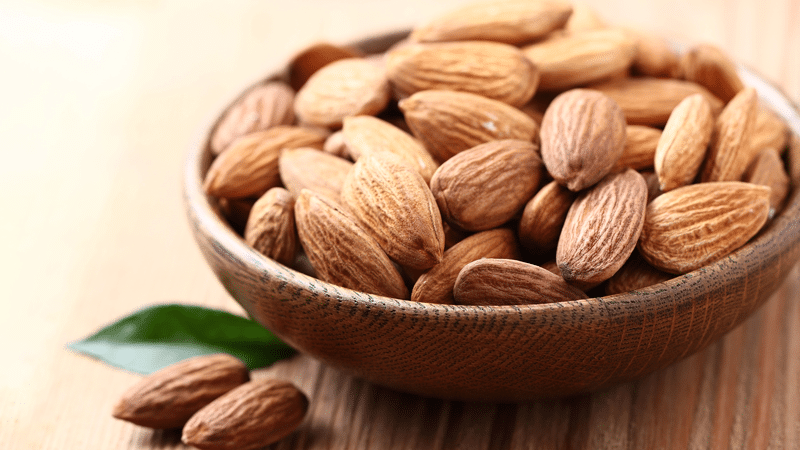
Almonds have become quite the popular nuts these days, in part because they’ve been marketed as great replacements for other foods. If we don’t drink dairy, almond milk is a common alternative. For those avoiding wheat, almond meal is there. And even for people who don’t like peanuts or are allergic to peanuts but not nuts, almond butter is there!
Almonds are so popular, that the demand for them has increased 400% since 1980! This demand has led to an increase in production, and that in turn has resulted in two major environmental and health concerns. The first is water use. In California, the world’s leading producer of almonds, the amount of water used to grow almonds is the same as the amount of water used in all Californian households combined! Learn more here. The second concern is the use of glyphosate (Roundup) on almond crops. 85% of all almonds are heavily treated with this chemical that has been linked to cancer and is also killing our bee population.
So, should we be eating almonds at all? Yes, but in moderation and always choosing organic. The nutrition-based recommendation is not to exceed 1/4 cup of whole nuts and seeds, or 2 tablespoons of nut/seed butter in a day, due to their high fat content. So, yes, add almonds to your nut rotation but be sure to also include other types of nuts and seeds in your diet.
Nutritional Benefits
Setting aside environmental concerns, almonds do offer many nutritional benefits. They are a great source of omega-6 fatty acids, vitamin B2 or riboflavin, vitamin E, copper, magnesium, manganese, and phosphorus. They also provide a good amount of protein, fiber, calcium, potassium, and zinc. This means almonds are great for our immune system, our brain, our heart, our bones, our muscles, our eyes, our hair and skin, and our genes.
Almonds are also quite delicious, raw or roasted, and they make great toppings and snacks. Almond butter can add a delicious nutty flavor to breakfast cookies, protein balls, or sauces. Keep in mind that most nutrition does get lost when making almond milk, which is why commercial almond milk is fortified with calcium and other nutrients. If possible, try switching to a more nutritious and environmentally friendly option like soy milk.
Try our personalized nutrition calculator below to see just how much nutrition you and your family can get from eating almonds.
Almond Nutrition Calculator
Use our personalized nutrition calculator to discover the percentage of daily nutrition needs you and your family can get from eating almonds.
Nutrition needs vary according to age, sex, and whether women of reproductive age are pregnant or breastfeeding. Fill out the form below for yourself and for your family members to get personalized results.*
* Calculated as a percentage of the Recommended Daily Allowances (RDAs) as established by the U.S. Department of Agriculture and the U.S. Department of Health and Human Services. Based on nutritional information provided by the U.S. Department of Agriculture as an average of multiple almonds samples.
References
